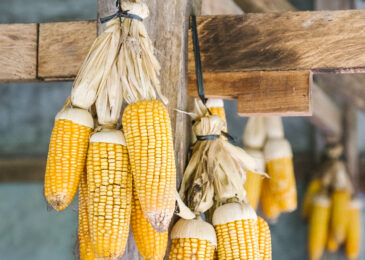Contents
- 1 Unlocking Garden Success: 7 Effective Tips for Improving Soil Fertility
- 2 Introduction
- 3 The Foundation of Fertile Soil
- 4 Crop Rotation – The Soil Rejuvenator
- 5 Optimize Nutrient Management – Nourishing Your Garden
- 6 Maintain Proper pH Levels – Balancing Act for Soil Health
- 7 Mulching for Soil Protection and Beyond
- 8 Cover Cropping – Nature’s Gift to Your Soil
- 9 Cultivating a Flourishing Garden – Recap and Additional Tips
- 10 Conclusion
Unlocking Garden Success: 7 Effective Tips for Improving Soil Fertility
Introduction
Gardening, with its deep roots in human history, is a pursuit that connects us to the earth, nurtures our creativity, and yields the fruits of our labor in the form of colorful blooms, fresh produce, and a profound sense of accomplishment. Whether you are a seasoned horticulturalist or just getting your hands dirty for the first time, the desire for a thriving garden is a universal aspiration.
At the heart of every lush garden lies a well-tended secret – fertile soil. The soil is not just a silent spectator but a dynamic partner in the gardening journey, supporting the growth of plants, nurturing life, and holding the keys to gardening success. In this comprehensive guide, we will delve deep into the art and science of soil fertility, uncovering the seven effective tips that can transform your garden into a flourishing oasis.
From understanding the intricacies of soil composition and nutrient balance to embracing time-honored practices like crop rotation and cover cropping, we will explore the essential elements that contribute to a vibrant, healthy garden. Through each part of this series, you will gain insights, practical knowledge, and a deeper appreciation for the role that soil plays in nurturing your green spaces.
So, prepare to embark on a journey of discovery, one that will empower you to unlock the full potential of your garden. Whether your gardening dreams involve a bountiful vegetable patch, a fragrant flowerbed, or a serene backyard oasis, the principles of soil fertility outlined in this guide will serve as your compass on the path to gardening success. Let’s dig in and unearth the secrets that will transform your green thumb into a thriving garden reality.
The Foundation of Fertile Soil
Gardening enthusiasts understand that the key to a thriving garden lies beneath the surface – in the quality of the soil. Whether you’re nurturing a lush flowerbed or cultivating a bountiful vegetable garden, healthy soil is the cornerstone of your gardening success. In this multi-part series, we’ll explore seven effective tips to boost soil fertility and elevate your gardening game.
Conduct a Soil Test
Before you dive into any soil improvement project, it’s crucial to know your soil’s current condition. A soil test is like a health checkup for your garden’s foundation. It reveals essential information such as nutrient levels, pH balance, and organic matter content. Armed with this knowledge, you can make informed decisions about how to enhance your soil’s fertility.
Add Organic Matter
Healthy soil is teeming with life, and organic matter is the lifeblood of any fertile garden. This includes compost, well-rotted manure, and decaying plant material. Organic matter improves soil structure, retains moisture, and provides essential nutrients to plants. Discover how to integrate organic matter effectively into your garden to give your plants the nutrition they crave.
Embrace Cover Cropping
Cover cropping is a time-tested technique that not only protects your soil from erosion but also contributes to its fertility. These “green manure” crops serve as living mulch, suppressing weeds and enriching the soil as they grow. Learn about the different cover crops suitable for your region and how to incorporate them into your gardening schedule.
Crop Rotation – The Soil Rejuvenator
In our quest for bountiful gardens, we continue to explore the essential strategies for enhancing soil fertility. In Part 1, we covered the significance of soil tests, adding organic matter, and embracing cover cropping. Now, we shift our focus to an age-old technique that can breathe new life into your garden’s soil – crop rotation.
Implement Crop Rotation
Crop rotation is a dynamic approach to gardening that involves changing the types of plants you grow in a specific area from season to season or year to year. This deliberate shift in plant species offers several benefits:
1. Pest and Disease Control: Different crops attract different pests and diseases. By rotating your crops, you can disrupt the life cycles of these nuisances, reducing the need for chemical interventions.
2. Nutrient Balance: Various plants have varying nutrient needs and contributions. Crop rotation helps maintain a balanced nutrient profile in your soil, preventing nutrient depletion and enhancing overall fertility.
3. Weed Suppression: Some crops are better at crowding out weeds than others. By alternating crops, you can naturally control weed growth without relying on herbicides.
4. Improved Soil Structure: Different plant roots penetrate the soil to varying depths and structures. Alternating between deep-rooted and shallow-rooted crops can help break up compacted soil and improve its overall structure.
5. Disease Suppression: Certain crops, like legumes, have the ability to fix nitrogen from the air and store it in their roots. Planting nitrogen-fixing crops in rotation can boost soil nitrogen levels, benefiting subsequent crops.
To implement crop rotation effectively, create a plan that takes into account your local climate, the specific needs of your plants, and the layout of your garden. Typically, you’ll divide your garden into different sections and rotate crops within these sections annually.
Optimize Nutrient Management – Nourishing Your Garden
As we continue our journey toward garden success, we arrive at a pivotal aspect of soil fertility – nutrient management. Part 2 introduced the importance of crop rotation in revitalizing your soil. Now, in Part 3, we explore the art of feeding your garden while maintaining soil health.
Optimize Nutrient Management
Proper nutrient management is the key to ensuring your plants receive the nourishment they need for robust growth. Here’s how you can achieve nutrient optimization:
1. Soil Testing, Again: Regular soil testing is a valuable practice. It helps you understand your soil’s nutrient levels, allowing you to tailor your nutrient management plan to your garden’s specific needs.
2. Balanced Fertilization: Use fertilizers wisely. Ensure they contain the essential macronutrients – nitrogen (N), phosphorus (P), and potassium (K) – in the right proportions. However, don’t overlook the importance of secondary and micronutrients like calcium, magnesium, sulfur, and various trace elements. These lesser-known nutrients are often critical for healthy plant development.
3. Organic vs. Synthetic Fertilizers: Consider the pros and cons of organic and synthetic fertilizers. Organic options release nutrients slowly, providing long-term benefits to the soil. Synthetic fertilizers can deliver nutrients quickly but may lead to soil depletion over time.
4. Compost Magic: Incorporating compost into your garden is a natural way to enrich your soil with nutrients. It enhances the soil’s structure, water-holding capacity, and biological activity while providing a steady release of essential elements.
5. Seasonal Adjustments: Different plants have varying nutrient requirements at different growth stages. Adjust your fertilization schedule to meet these changing needs.
6. Mulching Matters: Part 1 discussed mulching as a soil protection technique. It also helps in nutrient management by preventing nutrient leaching and maintaining a stable soil temperature, which is beneficial for nutrient uptake.
7. Water Wisely: Proper watering practices are essential for nutrient absorption. Overwatering can lead to nutrient runoff, while underwatering can hinder nutrient uptake by plant roots.
Remember that nutrient management is an ongoing process. Gardening success depends on your ability to adapt and fine-tune your nutrient regimen based on the evolving needs of your plants and soil.
Maintain Proper pH Levels – Balancing Act for Soil Health
In our pursuit of garden excellence, we’ve uncovered the importance of soil testing, crop rotation, and nutrient management. Now, in Part 4 of our series, we delve into an often-overlooked yet vital aspect of soil fertility – maintaining proper pH levels.
Maintain Proper pH Levels
pH, short for “potential of hydrogen,” measures the acidity or alkalinity of your soil on a scale from 0 to 14, with 7 being neutral. Understanding and regulating the pH of your soil is crucial for several reasons:
1. Nutrient Availability: The pH level directly affects the availability of essential nutrients to your plants. Different nutrients are more or less accessible to plant roots depending on the soil’s pH. For instance, acidic soils (low pH) can lock up essential nutrients like calcium, magnesium, and phosphorus, while alkaline soils (high pH) can limit the availability of trace elements.
2. Microbial Activity: Soil pH influences the activity of beneficial microorganisms that aid in nutrient cycling and decomposition. Maintaining the right pH encourages a healthy microbial community, which benefits your plants.
3. Plant Preferences: Different plants thrive in specific pH ranges. Understanding your garden’s pH and the preferences of the plants you intend to grow will help you select the right crops for your soil.
4. pH Adjustment: To correct pH imbalances, you can use amendments like lime to raise pH in acidic soils or sulfur to lower pH in alkaline soils. These adjustments should be made gradually and based on the recommendations from your soil test.
5. Regular Monitoring: pH is not a static value; it can change over time due to various factors, including weather, watering habits, and the type of plants you grow. Regularly monitor your soil’s pH to ensure it remains within the optimal range for your plants.
6. Organic Matter’s Role: Incorporating organic matter, as discussed in Part 1, can help buffer pH fluctuations, making it easier to maintain stable pH levels.
Achieving and maintaining the right pH balance in your soil is essential for unlocking your garden’s full potential. It’s a balancing act that requires attention and diligence, but the rewards in terms of healthier plants and increased yields are well worth the effort.
In Part 5, we’ll explore the practice of mulching in more detail. Beyond its soil protection benefits, mulch plays a significant role in regulating soil temperature and moisture, fostering a conducive environment for plant growth. Stay tuned for insights on how to harness the power of mulch in your garden.
Mulching for Soil Protection and Beyond
In our ongoing quest for gardening success, we’ve uncovered the importance of soil testing, crop rotation, nutrient management, and maintaining proper pH levels. Now, in Part 5 of our series, we explore the multifaceted benefits of mulching and how it can be a game-changer for your garden.
Mulching for Soil Protection
Mulching is more than just a pretty garden feature; it’s a powerful tool for maintaining soil health and promoting plant growth. Here’s why mulch matters:
1. Soil Temperature Regulation: Mulch acts as a natural insulator, helping to keep soil temperatures stable. In the scorching heat of summer, it prevents soil from overheating, while in cold winters, it provides some protection against freezing temperatures. This stability is crucial for healthy plant roots.
2. Moisture Retention: Mulch acts as a barrier that reduces evaporation, keeping the soil consistently moist. This is particularly beneficial during dry spells when regular watering might not be sufficient.
3. Weed Suppression: A layer of mulch helps smother weeds by blocking sunlight, which is essential for weed seed germination. Fewer weeds mean less competition for nutrients and water.
4. Erosion Control: Mulch helps prevent soil erosion by reducing the impact of heavy rain and wind. It keeps the topsoil in place, preserving valuable nutrients and preventing runoff.
5. Improved Soil Structure: Over time, as mulch breaks down, it adds organic matter to the soil. This enhances soil structure, aeration, and drainage.
6. Pest Management: Some types of mulch, like cedar or pine, can act as a natural pest repellent due to their aromatic properties.
When mulching, consider using organic materials such as wood chips, straw, or compost. These materials decompose slowly, providing long-term benefits to your soil. Apply mulch evenly around your plants, leaving a small gap around the stem to prevent moisture-related issues.
Choosing the Right Mulch: Different mulch materials have distinct advantages. Wood mulch offers a classic look and decomposes slowly, while straw or hay is excellent for vegetable gardens. Compost as mulch provides both nutrient enrichment and weed suppression.
Mulch Depth: Apply a layer of mulch that is 2 to 4 inches thick for optimal results. Avoid piling mulch directly against the plant stems, as this can create a moist environment that encourages rot.
As you incorporate mulching into your gardening routine, you’ll find that it not only protects your soil but also enhances its fertility, creating an ideal environment for your plants to thrive.
Cover Cropping – Nature’s Gift to Your Soil
s our journey to unlock garden success continues, we arrive at a powerful technique that Mother Nature herself has been using for eons – cover cropping. In Part 6 of our series, we explore the incredible benefits of cover cropping and how it can be a game-changer for your soil.
Embrace Cover Cropping
Cover cropping involves planting specific crops not for harvest but to benefit your garden’s soil and overall ecosystem. These “green manure” crops offer a wealth of advantages:
1. Soil Enrichment: Cover crops, like legumes (e.g., clover and peas), have the unique ability to fix atmospheric nitrogen and convert it into a form that other plants can use. When you incorporate these crops into your garden, they naturally enrich the soil with nitrogen, reducing the need for synthetic fertilizers.
2. Erosion Control: The roots of cover crops help bind soil particles together, reducing erosion caused by wind and water. This is especially important on slopes or in areas with heavy rainfall.
3. Weed Suppression: By shading the soil and competing with weeds for nutrients and sunlight, cover crops can significantly reduce weed growth.
4. Pest and Disease Management: Some cover crops, such as marigolds, can act as natural repellents for pests and diseases, reducing the need for chemical interventions.
5. Biodiversity: Cover cropping enhances biodiversity in your garden by attracting beneficial insects and pollinators, creating a more resilient and balanced ecosystem.
6. Improved Soil Structure: The root systems of cover crops help break up compacted soil, improve aeration, and enhance water infiltration.
Selecting Cover Crops: The choice of cover crop depends on your specific goals and the time of year. Legumes are excellent for nitrogen fixation, while grasses like rye or oats are effective for weed suppression and erosion control. Mixtures of cover crops can provide a combination of benefits.
Planting and Incorporating Cover Crops: Plant cover crops at the appropriate time for your region and follow recommended seeding rates. Typically, cover crops are grown between your main crops or during the off-season. When it’s time to prepare your garden beds for planting, simply cut down the cover crops and incorporate them into the soil as green manure.
Rotation and Diversity: Like traditional crops, it’s essential to practice crop rotation with cover crops to prevent disease buildup and nutrient depletion.
Embracing cover cropping is a sustainable and holistic approach to soil fertility. It harnesses the power of natural processes to improve your garden’s health and productivity while reducing the need for synthetic inputs.
Cultivating a Flourishing Garden – Recap and Additional Tips
Congratulations on embarking on the journey to unlock garden success by enhancing soil fertility. In this final installment of our series, let’s recap the key takeaways from the previous six parts and offer some additional tips to ensure your gardening endeavors flourish.
Recap of Key Tips:
1. Soil Testing: Conduct regular soil tests to understand your soil’s nutrient content, pH, and other vital factors.
2. Adding Organic Matter: Enrich your soil with organic matter like compost and well-rotted manure to improve its structure and nutrient-holding capacity.
3. Embrace Cover Cropping: Integrate cover crops into your gardening schedule to enrich the soil with nutrients, suppress weeds, and improve biodiversity.
4. Implement Crop Rotation: Rotate your crops to manage pests, diseases, and nutrient balance while enhancing soil health.
5. Optimize Nutrient Management: Provide the right nutrients at the right time to support healthy plant growth, keeping in mind the balance between organic and synthetic fertilizers.
6. Maintain Proper pH Levels: Regularly monitor and adjust your soil’s pH to ensure optimal nutrient availability to your plants.
7. Mulching for Soil Protection: Mulch your garden beds to regulate soil temperature, retain moisture, suppress weeds, and improve soil structure.
Additional Tips for Garden Success:
8. Observational Gardening: Pay attention to your garden. Regularly inspect your plants for signs of stress, disease, or nutrient deficiencies. Early intervention can prevent larger issues.
9. Water Wisely: Implement efficient watering practices, such as drip irrigation or soaker hoses, to deliver water directly to the root zone and reduce water wastage.
10. Companion Planting: Explore companion planting techniques to harness the benefits of specific plant combinations that deter pests, improve nutrient uptake, or enhance flavor.
11. Pest Management: Use integrated pest management (IPM) strategies to minimize the use of chemical pesticides. Encourage natural predators and employ organic pest control methods when necessary.
12. Seasonal Planning: Tailor your gardening efforts to your region’s climate and seasons. Adjust planting schedules and crop choices accordingly.
13. Soil Protection: Implement erosion control measures like terracing or installing windbreaks to protect your soil from erosion due to weather conditions.
14. Learn and Adapt: Gardening is a continuous learning process. Stay curious, keep a garden journal, and be open to trying new techniques and plant varieties.
Remember, each garden is unique, and what works best for one might not be ideal for another. Gardening is a rewarding journey filled with challenges and triumphs. By incorporating the knowledge and tips from this series, you’re well on your way to cultivating a flourishing garden with healthy, fertile soil.
May your gardening adventures be filled with abundant harvests, vibrant blooms, and a deeper connection to the natural world. Happy gardening!
Conclusion
In our exploration of unlocking garden success through soil fertility, we’ve embarked on a journey that has taken us through seven crucial steps, each unveiling the secrets to nurturing vibrant, thriving gardens. From soil testing to cover cropping, nutrient management to mulching, we’ve delved into the essential practices that lay the foundation for your gardening triumphs.
As you conclude this series armed with knowledge, it’s important to recognize that gardening is more than just a hobby; it’s a partnership with nature. By tending to the soil beneath our feet, we unlock the potential for an abundance of lush vegetables, colorful flowers, and a deeper connection to the world outside our windows.
Fertile soil is not merely dirt; it’s a living ecosystem teeming with life, nutrients, and potential. By conducting soil tests, understanding nutrient balance, and carefully selecting crops, we can create an environment where plants flourish and pests are kept at bay.
The incorporation of organic matter, cover cropping, and mulching fosters soil health, ensures proper moisture levels, and promotes a diverse ecosystem within your garden. Crop rotation and pH management offer further balance, preventing the depletion of nutrients and the buildup of pests and diseases.
However, gardening is also an art, and there’s no one-size-fits-all approach. Each garden is unique, shaped by its location, climate, and the desires of its caretaker. While these seven steps serve as a comprehensive guide, they are the starting point for you to experiment, adapt, and cultivate a garden that resonates with your vision.
Remember, gardening is a journey, a constant evolution of learning and growth. Cherish the moments of discovery, embrace the challenges, and celebrate the harvests. Whether you have acres of land or a few pots on a balcony, the magic of gardening lies in the connection it forges between you and the natural world.
So, go forth with the knowledge you’ve gained, the soil you’ve nurtured, and the love you’ve sown into your garden. May your gardening endeavors be abundant, your green spaces flourishing, and your connection to the earth enduring. Happy gardening!





